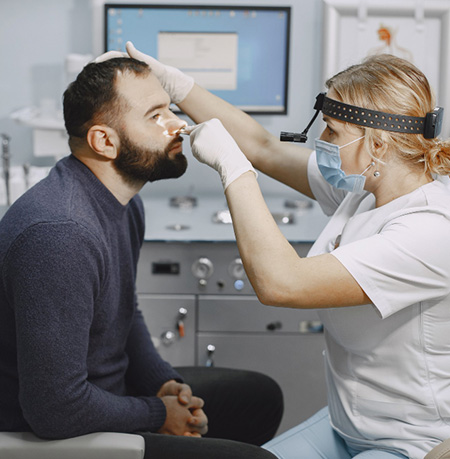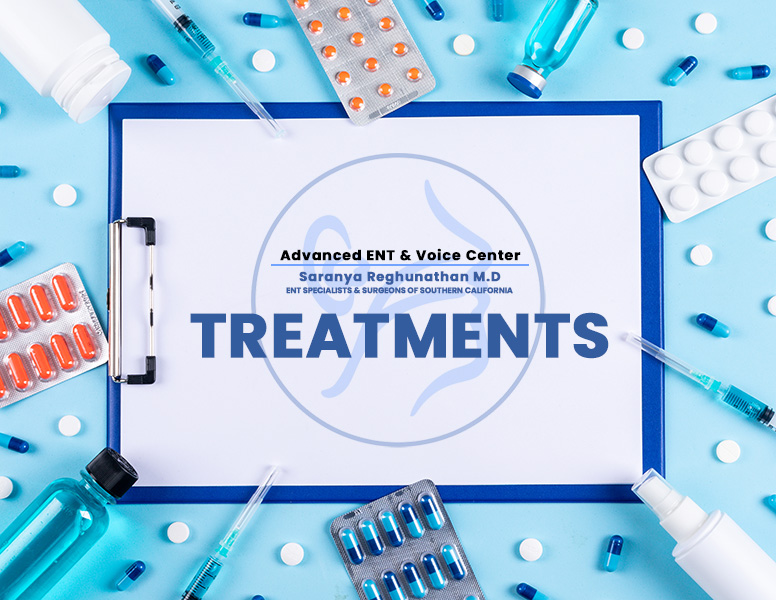Overview:
Nasal airway obstruction (NAO) occurs when airflow through the nose is restricted, making it difficult to breathe. This condition can significantly impact quality of life, leading to mouth breathing, poor sleep, nasal congestion, reduced exercise tolerance, and difficulty speaking clearly. Causes of nasal airway obstruction include:
- Deviated Septum: A misalignment of the nasal septum that blocks one or both nasal passages.
- Enlarged Turbinates: Swollen structures inside the nose that filter and humidify the air but can obstruct airflow when enlarged.
- Nasal Valve Collapse: Weakness or narrowing of the nasal valve (the narrowest part of the nasal airway), which can worsen during inhalation.
- Chronic Rhinitis or Inflammation: Persistent swelling and mucus buildup due to allergies, infections, or environmental irritants.
- Nasal Polyps: Noncancerous growths inside the nasal passages that can block airflow.
Symptoms:
- Chronic nasal congestion
- Difficulty breathing through the nose
- Increased mouth breathing, especially at night
- Reduced sense of smell or taste
- Frequent snoring or disrupted sleep
- Feeling of nasal blockage that worsens with deep breaths


Vivaer® is a breakthrough solution for many patients who suffer from nasal airway obstruction but want to avoid surgery. It offers long-term relief with minimal downtime, allowing patients to breathe better almost immediately after treatment.
Treatment Options
Medications: Nasal corticosteroids, antihistamines, and decongestants can help reduce swelling and inflammation.
Saline Irrigation: Regular use of saline sprays or neti pots can flush out mucus and allergens, improving airflow.
Vivaer® Nasal Airway Remodeling: A non-invasive, in-office treatment using radiofrequency (RF) energy to reshape and strengthen the nasal valve area, improving airflow without surgery. Vivaer is a safe and effective solution for patients experiencing nasal valve collapse or obstruction.
Turbinate Reduction: If enlarged turbinates contribute to obstruction, radiofrequency or surgical reduction can help restore normal airflow.
Septoplasty: For a deviated septum, a surgical procedure can straighten the nasal septum and improve breathing.
Endoscopic Sinus Surgery: If polyps or chronic sinusitis contribute to obstruction, minimally invasive surgery may be required to remove blockages and enhance airflow.
Expert ENT & Surgical Care
Breathe, Hear, and Heal!
From ear, nose, and throat care to advanced surgical treatments, our specialists provide expert solutions for your health. Request your consultation today!
